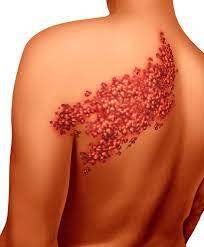Post-herpetic neuralgia (PHN) is a debilitating condition that can occur following an outbreak of shingles, which is caused by the varicella-zoster virus. This condition is characterized by persistent pain in the area where the shingles rash appeared, often described as burning, stabbing, or aching. The pain can be severe and long-lasting, significantly impacting the quality of life. Pregabalin, a medication originally developed for epilepsy, has been found to be effective in managing neuropathic pain, including PHN. This article explores the nature of PHN, the mechanism of action of Pregabalin, its effectiveness, dosage, side effects, and tips for managing pain. If you are considering treatment options, you may want to buy Pregabalin 300mg to help alleviate your symptoms.
Understanding Post-Herpetic Neuralgia
What is Post-Herpetic Neuralgia?
Post-herpetic neuralgia is a complication that arises after a shingles infection. Shingles itself is a reactivation of the varicella-zoster virus, which remains dormant in the body after a person has had chickenpox. When the virus reactivates, it can cause a painful rash, and in some individuals, the pain persists long after the rash has healed. PHN can occur in anyone who has had shingles, but it is more common in older adults and those with weakened immune systems.
Symptoms of PHN
The primary symptom of PHN is pain in the area where the shingles rash occurred. This pain can vary in intensity and may be accompanied by other sensations, such as:
- Burning: A constant, searing pain that can be debilitating.
- Stabbing: Sharp, intermittent pain that can be triggered by touch or movement.
- Itching: A persistent urge to scratch the affected area.
- Sensitivity: Increased sensitivity to touch, known as allodynia, where even light contact can cause pain.
Impact on Quality of Life
The chronic pain associated with PHN can lead to significant emotional and psychological distress. Many individuals experience anxiety, depression, and sleep disturbances due to the persistent nature of the pain. This can create a cycle of pain and emotional distress that further exacerbates the condition.
The Role of Pregabalin in Pain Management
What is Pregabalin?
Pregabalin is an anticonvulsant medication that is also used to treat neuropathic pain, fibromyalgia, and generalized anxiety disorder. It works by modulating the release of certain neurotransmitters in the brain, which helps to reduce the perception of pain. If you are looking for effective pain relief, you might consider where to buy Pregabalin 300mg.
Mechanism of Action
Pregabalin binds to the alpha-2-delta subunit of voltage-gated calcium channels in the central nervous system. This action inhibits the release of excitatory neurotransmitters, such as glutamate, substance P, and norepinephrine, which are involved in pain transmission. By reducing the excitability of neurons, Pregabalin helps to alleviate the pain associated with conditions like PHN.
Effectiveness of Pregabalin for PHN
Numerous studies have demonstrated the effectiveness of Pregabalin in managing neuropathic pain, including PHN. Clinical trials have shown that Pregabalin can significantly reduce pain levels and improve overall quality of life for individuals suffering from PHN.
-
Clinical Studies: Research has indicated that Pregabalin can lead to a reduction in pain scores in patients with PHN. In one study, patients taking Pregabalin reported a significant decrease in pain intensity compared to those receiving a placebo.
-
Dosage and Administration: The typical starting dose of Pregabalin for PHN is 150 mg per day, which can be gradually increased to a maximum of 600 mg per day, depending on the patient’s response and tolerance. The medication is usually taken in divided doses throughout the day. If you decide to Pregabalin 300mg, ensure you follow the prescribed guidelines.
-
Onset of Action: Pregabalin may begin to provide pain relief within a week of starting treatment, although some patients may experience benefits sooner.
Side Effects of Pregabalin
While Pregabalin is generally well-tolerated, it can cause side effects in some individuals. Common side effects include:
- Dizziness: A feeling of lightheadedness or unsteadiness.
- Drowsiness: Increased sleepiness or fatigue, which can affect daily activities.
- Dry Mouth: A decrease in saliva production, leading to discomfort.
- Weight Gain: Some individuals may experience an increase in appetite and weight.
Less common but more serious side effects can include:
- Allergic Reactions: Rash, itching, or swelling.
- **Mood Changes **: Increased anxiety, depression, or suicidal thoughts.
- Severe Dizziness: A feeling of spinning or loss of balance.
Patients should discuss any side effects with their healthcare provider, who can help manage them or adjust the dosage as needed.
Tips for Managing Pain with Pregabalin
-
Follow Prescribing Guidelines: Adhere to the recommended dosage and administration schedule to ensure optimal pain relief.
-
Monitor Side Effects: Keep track of any side effects and report them to your healthcare provider.
-
Combine with Other Therapies: Pregabalin can be used in conjunction with other pain management strategies, such as physical therapy, acupuncture, or cognitive-behavioral therapy.
-
Maintain a Healthy Lifestyle: Engage in regular exercise, eat a balanced diet, and get adequate sleep to help manage pain and improve overall well-being.
-
Seek Support: Connect with others who are experiencing PHN to share experiences and gain emotional support.
In conclusion, Pregabalin 300mg can be an effective treatment option for managing the debilitating pain associated with post-herpetic neuralgia. By understanding the mechanism of action, dosage, and potential side effects, individuals can work with their healthcare provider to develop a comprehensive pain management plan. Additionally, incorporating lifestyle modifications and seeking support can help improve overall quality of life. If you are considering treatment options, you may want to buy Pregabalin 300mg to help alleviate your symptoms.
